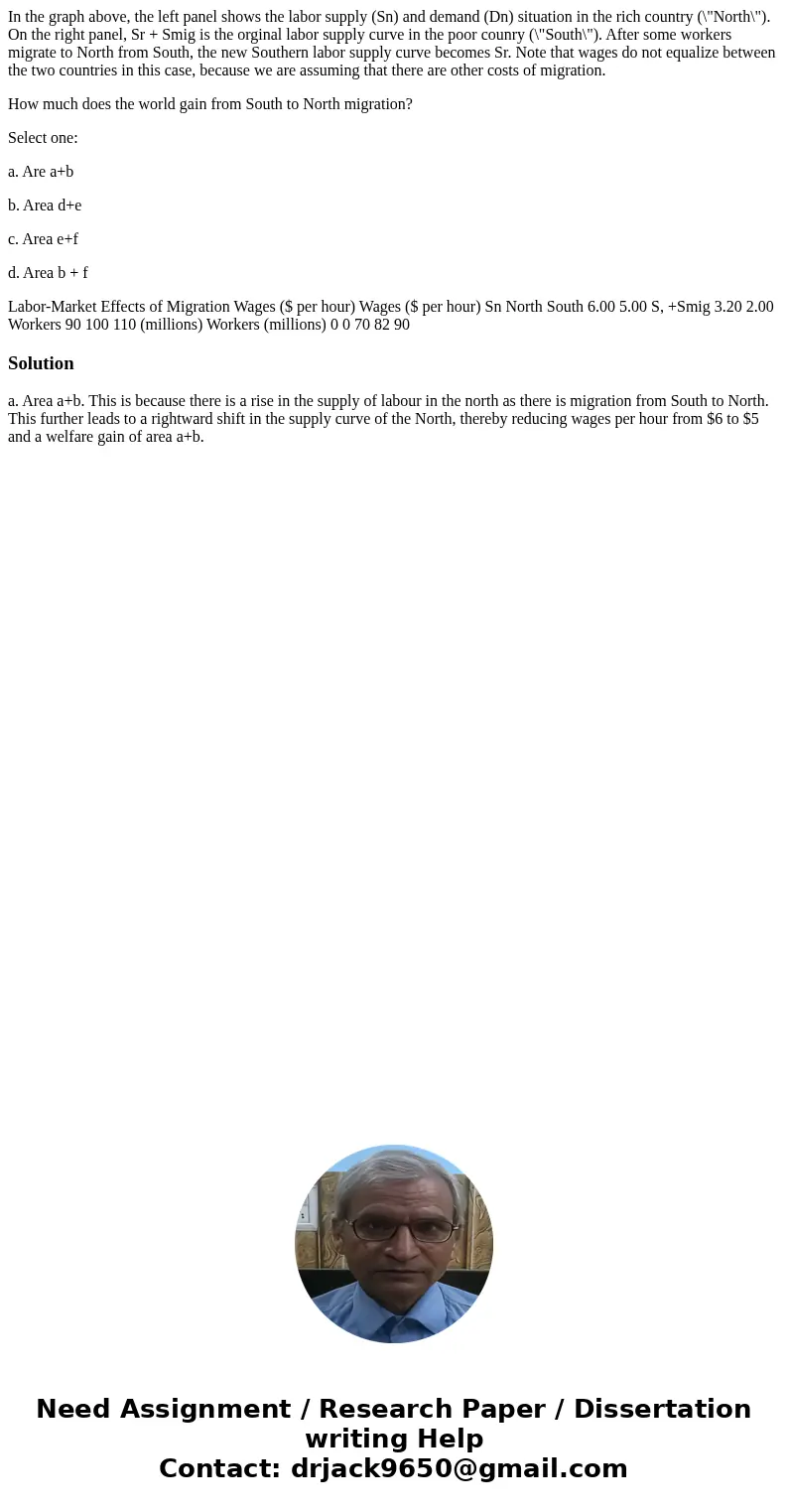In the graph above the left panel shows the labor supply Sn
In the graph above, the left panel shows the labor supply (Sn) and demand (Dn) situation in the rich country (\"North\"). On the right panel, Sr + Smig is the orginal labor supply curve in the poor counry (\"South\"). After some workers migrate to North from South, the new Southern labor supply curve becomes Sr. Note that wages do not equalize between the two countries in this case, because we are assuming that there are other costs of migration.
How much does the world gain from South to North migration?
Select one:
a. Are a+b
b. Area d+e
c. Area e+f
d. Area b + f
Labor-Market Effects of Migration Wages ($ per hour) Wages ($ per hour) Sn North South 6.00 5.00 S, +Smig 3.20 2.00 Workers 90 100 110 (millions) Workers (millions) 0 0 70 82 90Solution
a. Area a+b. This is because there is a rise in the supply of labour in the north as there is migration from South to North. This further leads to a rightward shift in the supply curve of the North, thereby reducing wages per hour from $6 to $5 and a welfare gain of area a+b.

 Homework Sourse
Homework Sourse